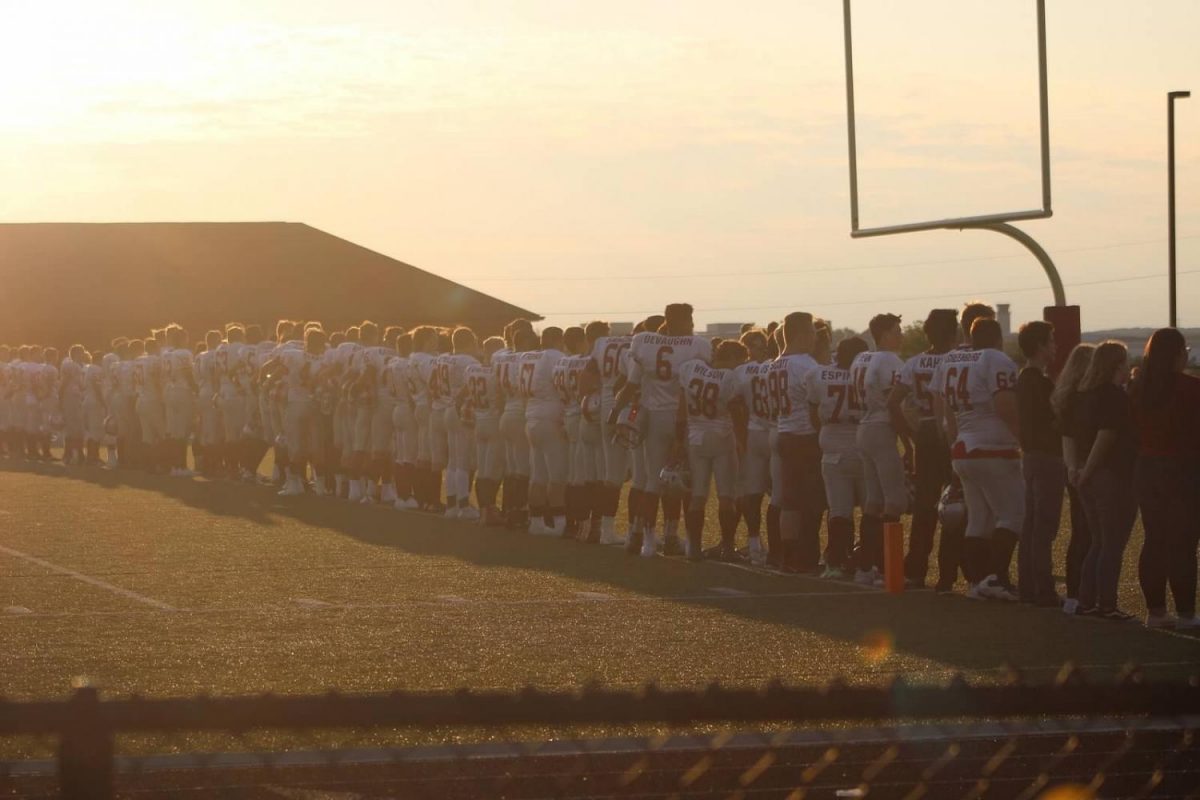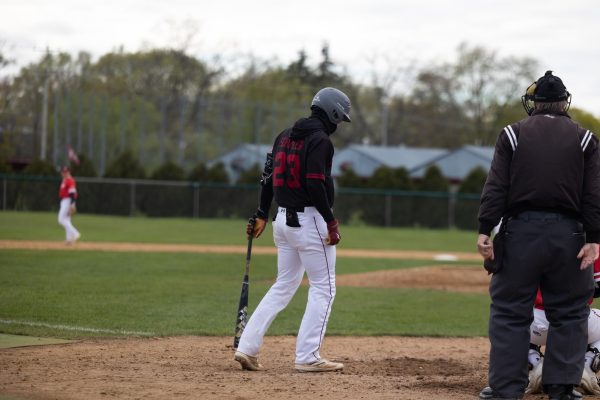ONLINE EXCLUSIVE: War
Athletes of all levels have decided to make a political statement by kneeling during the National Anthem.
More stories from John P. Petty
The red, white and blue banner known as the American flag has been hanging from flagpoles, draped along porches and waved in celebration at the conclusion of athletic contests. The American flag was there on Mount Suribachi when soldiers valiantly raised it on February 23, 1945. The American flag was there when Neil Armstrong, Buzz Aldrin and Michael Collins explored the moon’s surface, something that was unthinkable only decades before, on July 16, 1969. The American flag was there, flying at half-mast across the country following the death of president Abraham Lincoln on April 14, 1865. The American flag was there when American swimmer Michael Phelps broke the Olympic gold medal record, receiving his 23rd, on August 13, 2016. The American flag was there for many important dates of history, unconditionally, through thick and thin.
While the flag may be an array of fabrics intertwined to create design, belief, understanding and tradition give its true meaning. The flag could have a plethora of meanings, yet one common idea is that it is used to represent the United States. There is a reason that the American flag has flown high with triumph and motionless with sorrow. Most people agree the flag is symbolic for at least some idea, yet, belief, age and upbringing may change what it means to hoist an American flag.
These differences among beliefs are important when determining acceptable and unacceptable behavior in the spotlight. Having beliefs and freedom to pursue change may be a common ideal in society today. This ideal could only be possible through timeless battles and the ultimate sacrifice given by the people. However, where there is change, there is also controversy.
Thousands of people across the nation tuned in to watch the San Francisco 49ers take on the Denver Broncos in an NFL Preseason game, on August 20, 2016. To their surprise, 49ers Quarterback Colin Kaepernick sat down during the National Anthem and it was unclear exactly why. Later, it surfaced that Kaepernick was protesting recent happenings including shootings and illegal payoffs. His focus was on racism and how the country we live in is doing little to improve the parameters that had seemingly been decided several decades ago.
This news spread quickly and viewers were fed to either think that Kaepernick’s actions were justified because of problems in the news or that sitting during the National Anthem was disrespectful to everything the flag represented. Kaepernick repeated his “protest” the next week by sitting once again during the National Anthem. The following week, as reports continued and emotions grew, Kaepernick kneeled instead of sitting, in attempt to display that his intent was not to show disrespect towards the men and women who have created positivity for the United States.
Kaepernick was the first of many professional and collegiate athletes to take a stand, or kneel. This method of protest has not left the stations of sports broadcast or the minds of players, coaches and media ever since. Recently, more professional players have kneeled in groups, some of them holding hands, others engaging in prayer. The grand debate, however, is not over whether or not the world lacks justice, but whether using spectators and television viewers to make a point is a sound idea. Junior football player Kyle Jilly has his own opinion on whether or not Kaepernick’s actions are justified.
“I think that kneeling during the National Anthem isn’t a good way to protest something because in my eyes it looks disrespectful,” Jilly said. “However, I think that it is a good way to protest peacefully at least.”
It is basically undeniable that the rights and privileges granted to the nation’s people are to be exercised when necessary, yet what is the proper platform on which to do so? Jilly feels as though Kaepernick and other athletes could come up with better ways to get their point across.
“I think that within professional sports isn’t an appropriate place to protest because many of these players have little kids that look up to them and they’re teaching kids to be disrespectful toward our country,” Jilly said.
Many media members and sports fans nationwide feel as though if the athletes were actually intent on change then they would make efforts to directly change it, rather than just draw attention to themselves. Following extensive media attention and controversy, Kaepernick did indeed pledge to donate money to various foundations for change, yet his decision to donate had little impact on the opinions of those on the fence about his protest tactic. Senior Angelo Passarelli feels as though Kaepernick could get better publicity from simply donating.
“It would be more effective to actually do something about what they’re protesting instead of taking a knee,” Passarelli said. “They’re just trying to gain attention and they’re offending other people in the process.”
What the American flag means may differ more from person to person more than would be expected, yet it is completely predispositional. What gives a person the right to tell another person that it is proper to pay attention when the National Anthem is playing? What gives a person the initiative to suggest that it is important to display undivided attention and show respect to the country during traditional introductory ceremony? At what point is it disrespectful to exercise rights that were guaranteed several decades prior, even for a cause that is seen as positive? People of all ages talk and carry on during the National Anthem, as many war veterans stand intently and firmly salute the stars and stripes that were there during battle as well as at the moment. There is essentially no correct answer when making the determination, yet there are the guidelines from others and a common understanding of what sets the United States apart from other nations.
No matter where citizens are from, how they view the government, or what the most important symbols are, there are absolutes within daily life that can be counted on no matter what. No matter what the actual best way to fight for something is, or how issues resolve over time, citizens will always have the right to do so, even if it rubs others the wrong way. No matter what unfolds, big or small, positive or negative, controversial or simple, the American flag will always be there, flying triumphantly or inconsolable, but above all, unconditionally.











